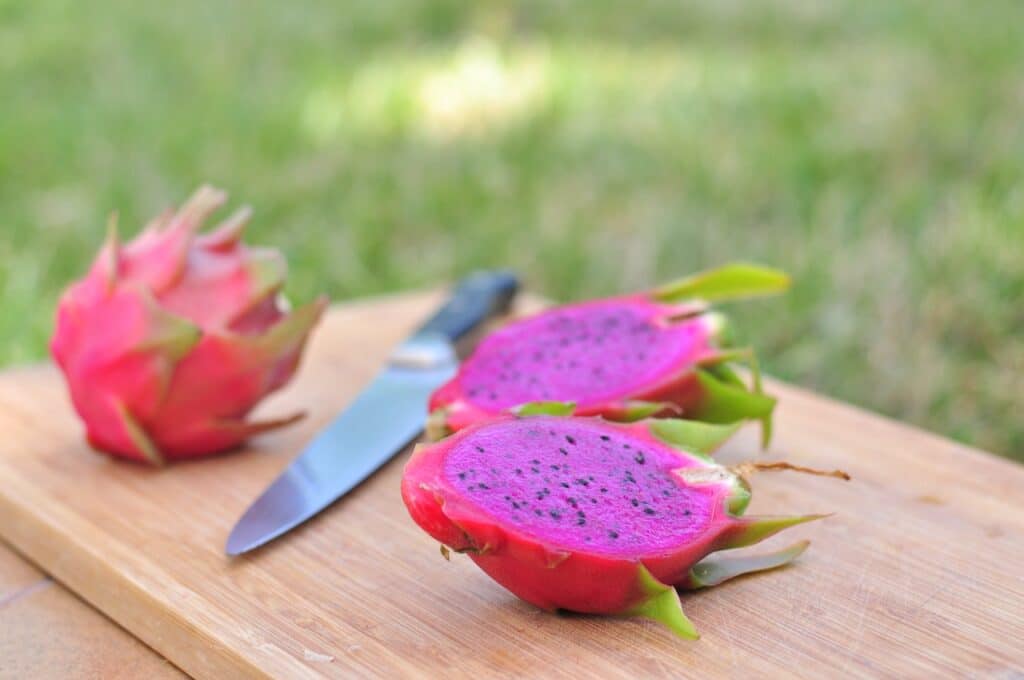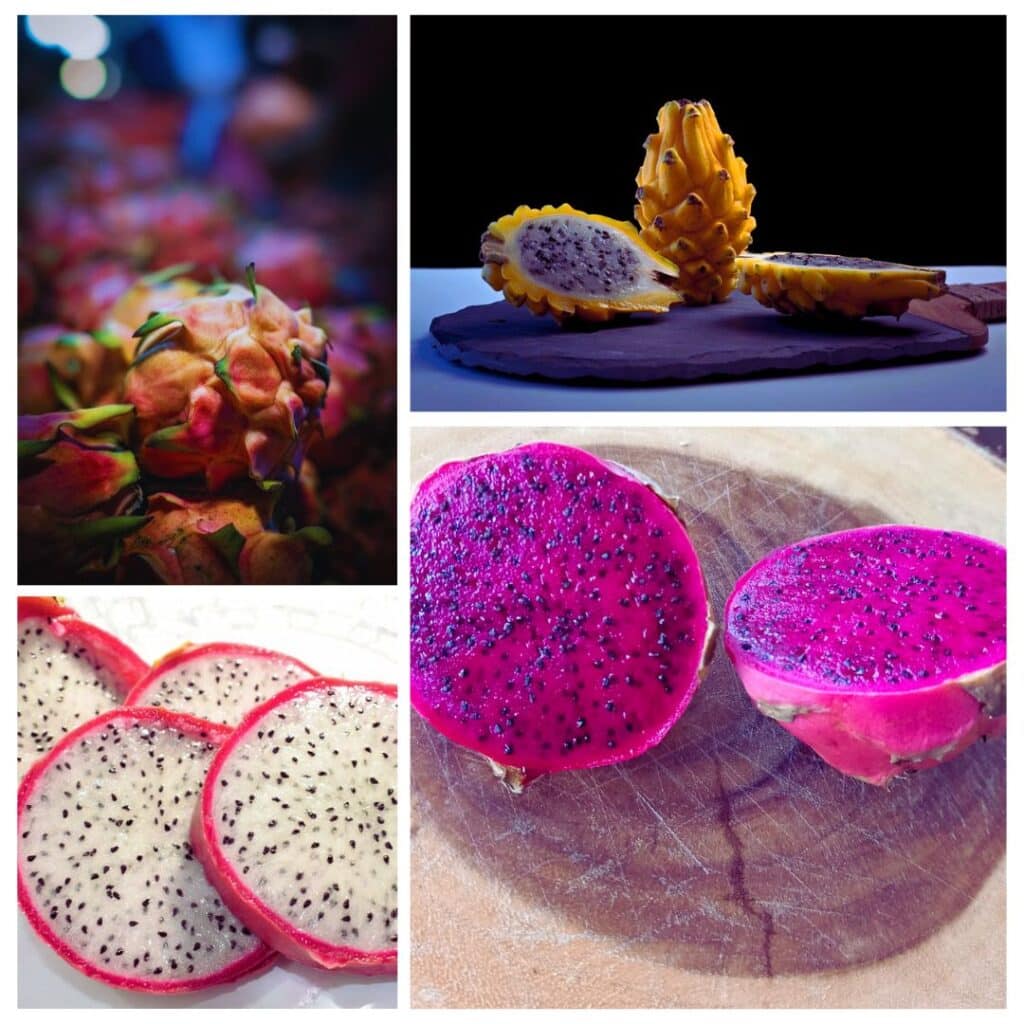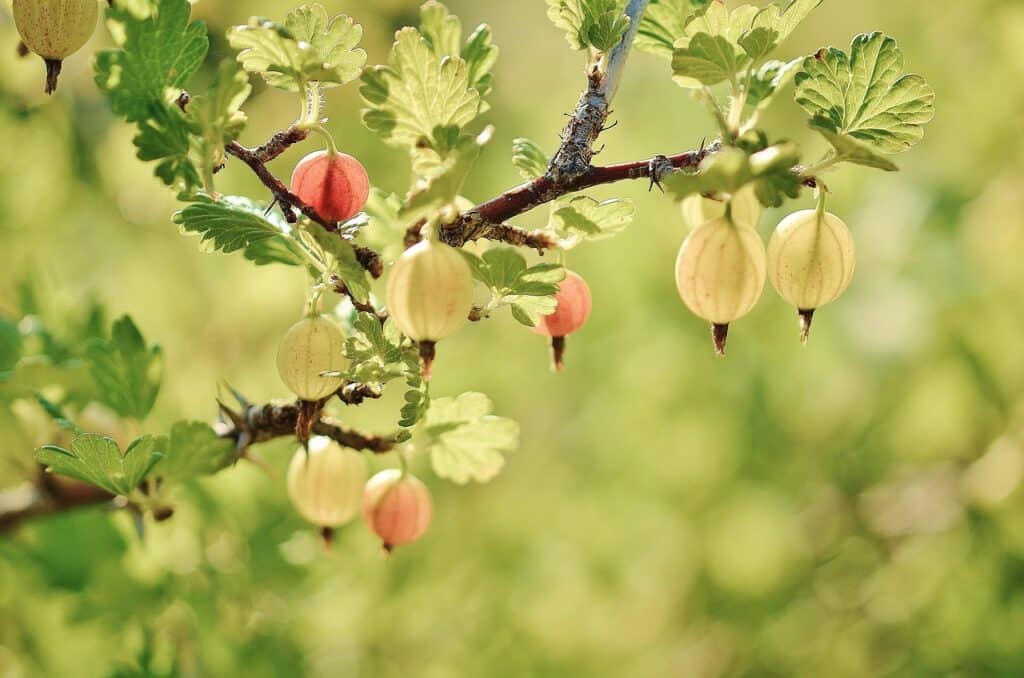Loganberry (Rubus x Loganobaccusis) is a cross between a blackberry and a raspberry. You can think of them as blackberries, but larger, juicier, sweeter, and with a red color which turns into a dark red when ripe. Any person who likes berries would like to have a plant like that, and in this article, we’ll see some tips on how to grow a loganberry bush.
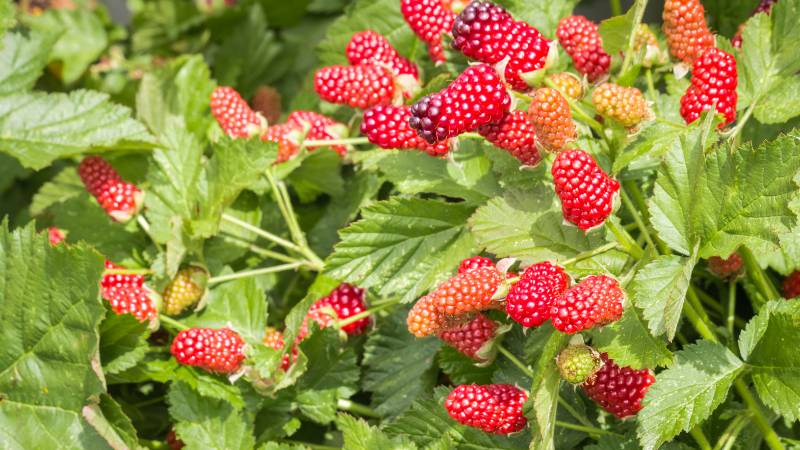
Details on How to Grow Loganberries
| Type | (Rubus x Loganobaccusis) | |
| Breed between | (Rubus ursinus x Rubus idaeus) | |
| Position | Full sun | |
| Soil | Any well-drained soil | |
| Ph | Neutral (6.0-7.0) | |
| Color when harvest | Dark Red, purple | |
| Spacing | 2-2.5 square meters | |
| Hardiness zones | USDA 6-10 | |
| Grown by | Bare roots, potted plants | |
| Propagation Methoods | Layering, Hardwood cuttings |
Growing Loganberries
Loganberries can be grown by planting them bare root, or by directly buying a potted plant in a nursery. As you may know, hybrid plants such as loganberries are not recommended to be grown from seed, as the germinated seed would not stay true to the parent plant.
Bare roots are the usual way to acquire loganberries during the fall-winter seasons. Many online stores and nurseries supply different varieties or loganberries.
Loganberries bare roots should be soaked in water for 1-2 hours, they are shrubs so it’s not necessary to give them too much time. After soaking them, immediately transplant them into your garden beds or containers by making a hole twice the wide of the bare root.
After planting the loganberries, cover all the roots with the soil and water until moist. One loganberry plant produces a lot of fruit, and rather than ordering another one I would encourage you to try other hybrid raspberry-blackberry varieties such as tayberries. This way, a bigger harvesting window time-frame as tayberries are ready for harvest earlier than loganberries.
If you decide to plant more than 1, give them at least 2 square meters of space between each other. As they are pretty big plants and can spread a lot after being established.
Propagating Loganberries

Loganberries can be propagated by layering or by taking a hardwood cutting.
To propagate Loganberries, (and most of the rubus genus plants) we can use the layering tip method. For this, we will take a vigorous vine and bent it below the soil surface, letting the tipe facing to the surface (but still in buried in the soil). The roots will grow from the bent and the plant will grow from the tip.
Hardwood cuttings can be taken during the dormant period (fall-winter) when the leaves already fell from the plant. The cutting should be between 5-10 inches long and have the thickness of a pencil.
Make a diagonal cut just above a bud and a straight cut just below a node. The straight cut is the downward side and the one we will plant in the soil. Dipping the bottom in some hormone rooting powder will help with the plant root development.
Both of this methods can be used to propagate loganberries, raspberries, blackberries and other berries from the rubus genus. While a little bit more “complicated” to put off, the layering method is expected to give better and faster results.
Growing Loganberry in Containers
Growing loganberries in containers is a good choice if you don’t want them to spread a lot, but this comes with the downside of having a less prosperous harvest. The containers should be about 12 inches deep and 18-24 inches wide.
Transplant your loganberry bare roots/ potted plants in a container with potting mix and compost. Water until the soil is moist with more or less frequency depending on the climate conditions. Insert a bamboo support or obelisk trellis to attach and train the loganberry while they grow.
Soil and Mulch
Loganberries are best grown in a nutrient rich, well draining soil with a neutral Ph (6.0-7.0) in a spot that receives full sun for best production and flavor.
Apply some organic mulch to help the moisture retention and weed control (take the weeds from the floor before mulching).
Pruning
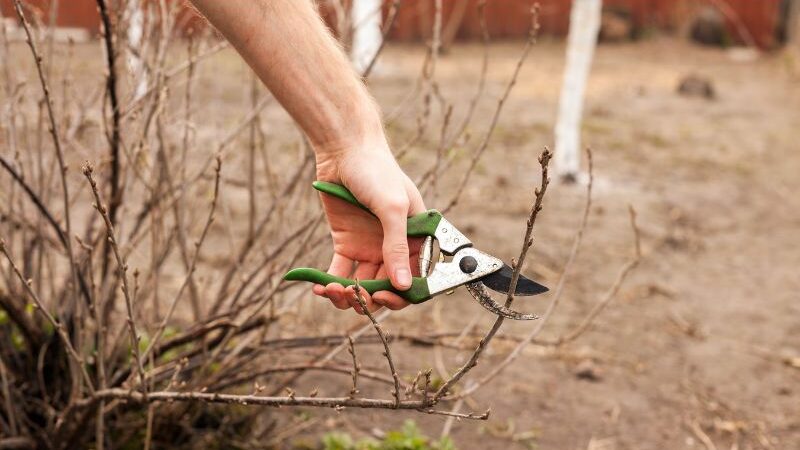
Loganberries are pruned in a similar way as Raspberries.
Loganberries are floricanes, which means they breed fruit on second year canes. According to this, you’ll want to prune all of the dead canes that already produced fruit and leave the primocanes, as these are the ones that will produce in the next year.
If you grew the loganberries in a garden bed, prune all of the suckers that grew away from the main plant. Also prune all of the dead, thin, small or unproductive canes in general.
Support
There are many ways to support loganberries, but they are often attached to fences or walls in a fan-type of figure, the same way as it’s done with tayberries. They can also be supported by a T-trellis structure.
Pest and Diseases
Loganberries tend to be very strong plants and don’t suffer too much from diseases. To take care of them you can place the standard measures you would for protecting against aphids, fungus, and birds.
Birds will generally be the biggest problem as it happens with many other berries, for loganberries this is specially true as the red color will attract many of them. But a bird net should solve the problem for the most part.
Harvesting
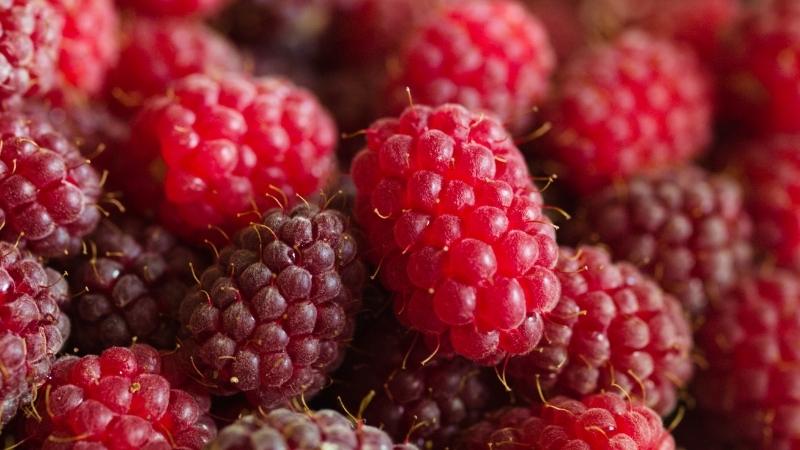
Loganberries will be ready for harvest a little bit later than tayberries in the mid-summer until. They don’t ripen evenly so you will have to pass a couple times during the harvesting season through your garden to recollect the fruit before the birds take them.
When ready, they will spread from their central core very easily and the fruits will possess a dark red-purple color. They contain a lot of juice inside of them so they are not usually left to dry for conserving, for this matter is better to freeze them. Loganberries can be used in juices, jams, pies, wines, desserts and more.
Your loganberry bush will thrive in your garden for about 15 years! I personally encourage you to try and grow both a loganberry and a tayberry. They are pretty similar with some subtle differences in flavor, while at the same time, one produces earlier (tayberries) than the other (loganberry). So you’ll be supplied for a long time.
I hope this guide on How to grow loganberry was useful for you, if you have any question or opinion you’d like to add, feel free to go to the comment section down below. Wish you a great season gardener!

